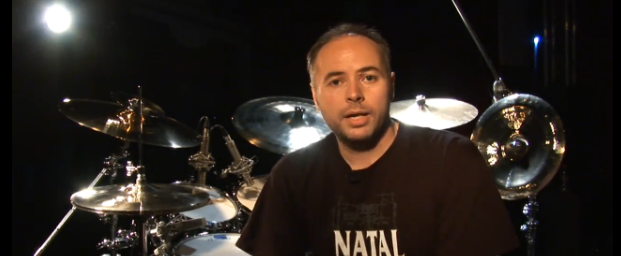Playing With a Band, Part 1: Communication and Form (w/ VIDEO)
Modern Drummer Web Exclusive!
Playing With a Band
Part 1: Communication and Form
by Paul Hose
It’s important to make regular eye contact with the other musicians when playing in an ensemble. In particular, focus on the bass player and keyboardist, as they—along with you—comprise the rhythm section. Your center of time and overall feel will be enhanced when you lock-in with them.
Musical Form
In music, the term “form” refers to the overall structure of a song or piece of music, and it describes how the composition is divided into sections. Knowing a song’s form helps you understand the way phrases are organized into larger chunks, like the verse or chorus.
Letters, such as AABA, commonly designate song form. The A section might be the verse and the B section might be the chorus. Therefore, an AABA form would signify two verses, a chorus, and then a third verse. Advertisement
A good way to develop understanding of form is to listen to music away from the drums. As you listen to some of your favorite songs, see if you can you identify when the form changes—verse to chorus and vice versa. Also, check out how the grooves and fills fit in relation to the different sections of the tune.
Timbre
In simple terms, timbre is what makes a particular sound different from another. For example, compare the tight timbre of a closed hi-hat to the washy timbre of the ride cymbal.
You should use different timbres musically. It’s common to play grooves on the hi-hat during the verse and then switch to the ride during the chorus. The transition between the two timbres is often delivered by way of a drum fill.
Try playing two simple grooves—one on the hi-hat and one on the ride cymbal—and notice the difference in timbre. Now play a simple phrase comprising a groove, a fill, and a new groove that uses a different timbre. Advertisement
The Play-Along Chart
The song I’m playing in this video is called “Cajon.” The drums play a two-step feel throughout. In the intro, play a fill midway through bar 2, and then establish a tight groove at bar 3.
The chorus begins at bar 7. Play through until bar 18, and then return to bar 7. The chorus is played seven times, taking the coda on the last time. Inspiration for this song draws from Blondie drummer, Clem Burke, especially his playing on the song “Heart Of Glass.”
To begin, listen one time through and follow the chart. Then play a simple, skeletal groove while reading the chart (no fills or variations). Then, using all of the points discussed within this lesson, go for a fully developed performance of the tune.
Click here to view/download pdf.
Click below to listen.
And watch the video below.
You can learn more about musical form and chart reading by checking out my book, Drumset for Beginners (Alfred Publishing). Discounted, signed copies are available from www.mlc-academy.com. To receive your discount simply type “moderndrummer” in the coupon box from the shopping cart. You can also access additional lesson materials at www.paulhose.com. Advertisement



